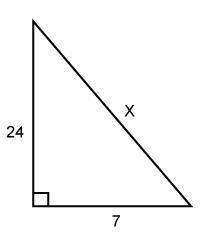
Mathematics, 06.06.2020 01:01 fooligan7100
Model 1: X is distributed as Poiss(λ) for some unknown λ>0. Model 2: X takes values in {1,2,3,4,5,6,≥7}, and for i=1,2,…7, we let pi denote the (unknown) probability that X=i. Here "≥7" is a placeholder for when the number of siblings is at least 7. For example, we do not distinguish between an individual having 7 siblings or 10 siblings in this model. Which one of the following best describes an advantage of using a Poisson distribution (Model 1) over the distribution in Model 2 to model X?
A. It allows us to model the data continuously.
B. It allows individuals to have an arbitrarily large number of siblings.
C. It reduces the amount of unknowns needed for modeling.

Answers: 2


Other questions on the subject: Mathematics

Mathematics, 21.06.2019 14:10, jessicaflower277
Can't gugys answer the ratio question. this is urgent the plans of a building is drawn toward scale of 1: 1000. kfc the foyer on the plans measures 62mm by 54mm, how large is the foyer in real life?
Answers: 1

Mathematics, 21.06.2019 17:30, ahnagoede2768
Thelime contains the point(-3,0) and parallel x-3y=3( show all work)
Answers: 3


Mathematics, 22.06.2019 01:30, loravillanueva87
What is 0.368,0.380,0.365,and 0.383 in order from least to greatest
Answers: 1
You know the right answer?
Model 1: X is distributed as Poiss(λ) for some unknown λ>0. Model 2: X takes values in {1,2,3,4...
Questions in other subjects:

Business, 03.02.2022 01:00

Mathematics, 03.02.2022 01:00







Biology, 03.02.2022 01:00

Arts, 03.02.2022 01:00




